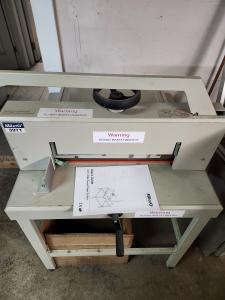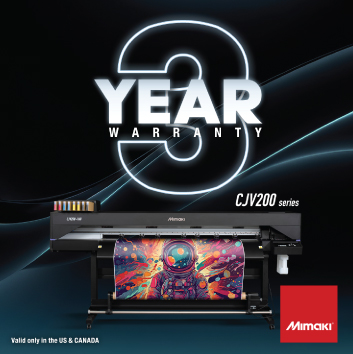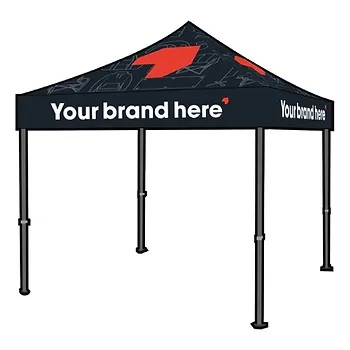TD at Union: When screens become stories
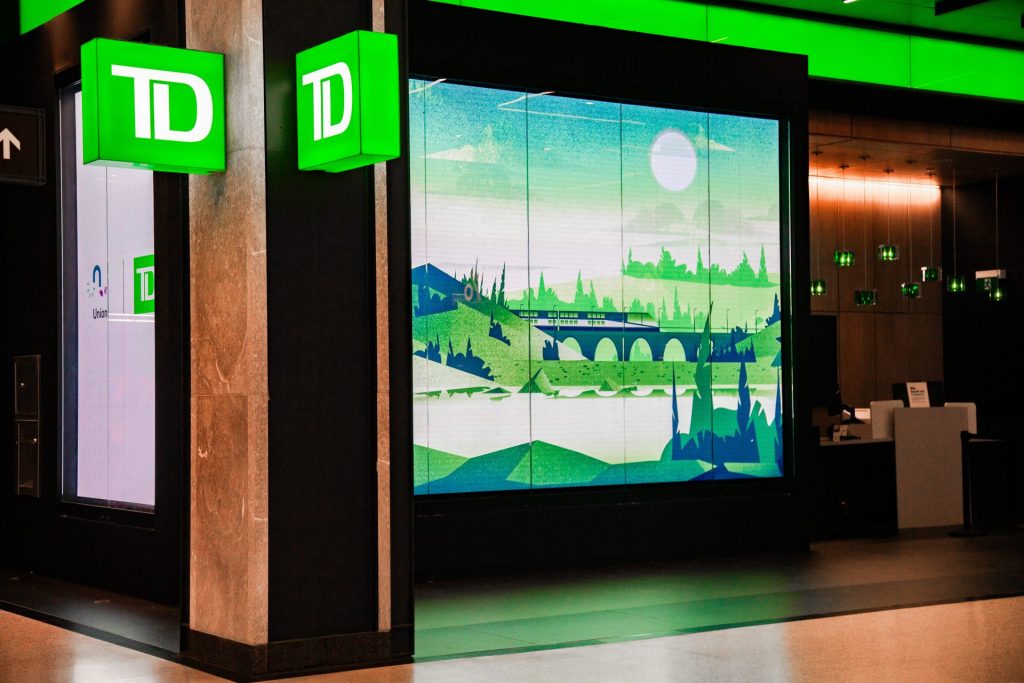
In the ever-evolving world of visual communication, the fusion of digital signage and experience design has emerged as a powerful medium for storytelling. This is perfectly demonstrated at TD Bank’s Union Station branch in downtown Toronto. Montreal-based studio Float4 has seamlessly integrated generative art into a high-traffic environment, reimagining how signage can shape mood, movement, and brand identity in real time.
With a reputation for designing immersive multimedia installations that amplify place and evoke emotion, Float4 specializes in experiences where content, data, and architecture converge. Their latest contribution to Canada’s busiest transportation hub exemplifies how digital canvases can enhance the built environment through atmosphere, responsiveness, and artistry.
At the core of this design approach lies a fundamental question: How can technology and creativity transform our experience of space—and in doing so, shape a deeper sense of place? One possible answer is the creation of digital narratives attuned to their spatial and cultural context. Whether generative, interactive, or ambient, this work is rooted in storytelling that strengthens the connection between audiences and their environment. From media-rich architectural façades to personalized exhibits, such projects aim to transform physical space through layered visual and emotional engagement.
In this context, digital displays are not simply information carriers—they can serve as dynamic, living canvases. At large public sites like Union Station, for example, this approach creates a meditative journey through movement, place, and memory.
A portal to Ontario’s landscapes
Commissioned by TD Bank to enhance their newly renovated Union Station branch, Float4 was invited to create an experience that would resonate with passersby, reflect the station’s cultural significance, and express TD’s commitment to community, innovation, and care.
The site called for content that could stand alongside the architectural and historical prominence of the station, while also speaking to the daily rhythm of commuters and travellers. The design needed to offer both presence and pause.
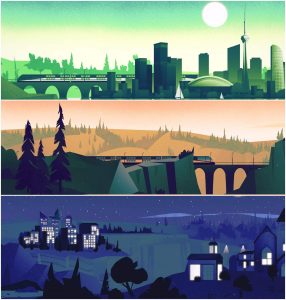
Float4 responded with a generative digital artwork powered by a Realmotion G8 media server and displayed on a striking 3.6 x 1.8-m (12 x 6-ft) LED screen at the branch’s entrance. The piece plays in a seamless parallax loop: a stylized train glides across rolling hills, downtown skylines, birch forests, and lakeside vistas—illustrative impressions of Ontario’s diverse landscapes. The esthetic echoes classic travel posters and editorial illustration, bringing warmth and elegance to the scene.
Importantly, this isn’t a pre-rendered video. It’s real-time generative art, a dynamic system that evolves based on live environmental inputs. A weather API feeds current meteorological conditions into the animation, meaning cloudy skies outside bring muted tones to the display, snow introduces flurries into the scene, and golden-hour sunlight adjusts the palette in tune with the time of day. The result is an ambient visual journey that remains responsive and alive.
Integrating art and data creates more than visual engagement—it creates emotional resonance. In a high-traffic transit location, the piece serves as a contemplative pause, offering a moment of stillness and familiarity within the bustle.
Designed for flexibility and longevity
Behind the scenes, Float4 also developed a custom content management system (CMS) for TD, allowing the client team to adjust select elements of the experience. From seasonal content updates to promotional overlays and sequence adjustments, the system offers flexibility while preserving the integrity of the generative core.
This approach to control and scalability reflects a broader design philosophy: experiential content should evolve with its environment, rather than resist it. In this way, the installation functions as an adaptive element within the space, intended not only to endure over time but also to grow and change alongside its context.
Seamless integration with architecture
Equally essential to the project’s success was integrating the display into the physical environment. Float4 approached this as a piece of environmental media, considering viewing angles, ambient light, foot traffic, and architectural flow. The screen acts as a street-level visual anchor, catching the eye through rhythm and motion rather than brightness or noise.
The stylized esthetic avoids literalism and instead invites interpretation. Its editorial sensibility and abstract landscapes help the piece blend into the broader narrative of the station—a place of arrivals, departures, and evolving stories.
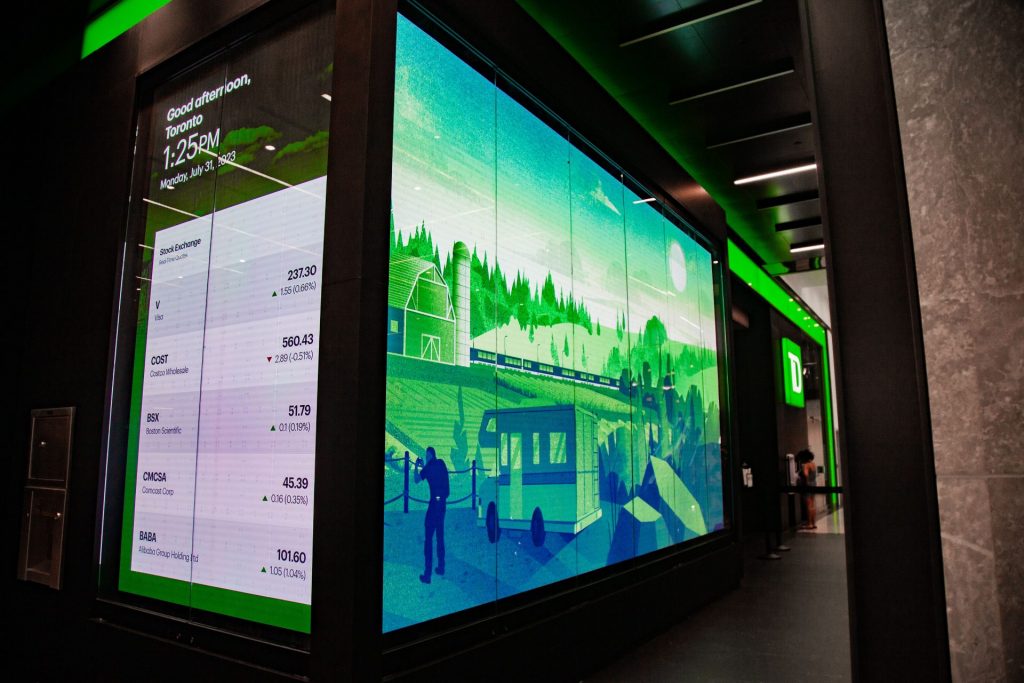
A Canadian benchmark
As digital experiences become more embedded in our physical world, the projects that endure are those that align with their setting, speak to their audiences, and leave emotional impressions. Float4’s work at TD Union Station is a testament to what’s possible when experiential storytelling meets generative design—transforming a screen into a portal, and a moment into a memory.
Alexandra Margulescu works at Float4, an immersive design studio that pushes the boundaries of creativity with art, science, and technology to amplify physical spaces. Their work spans the globe and includes large-scale immersive installations for architecture, public spaces, and themed entertainment destinations. Learn more at www.float4.com and www.realmotion.com.

